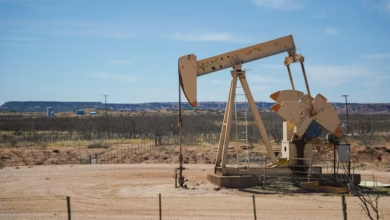Navigating the Oil Transportation Landscape: Pipelines, Tankers, and Innovations Shaping the Global Oil Trade

In today's interconnected world, the transportation of oil plays a crucial role in the dynamics of the global oil trade, influencing everything from oil prices to energy security. With the growing complexities of oil consumption, the methods of moving crude oil—from pipelines and tankers to emerging technologies—have become focal points of discussion among industry stakeholders. As countries navigate their oil reserves and explore the implications of shale oil, oil sands, and offshore drilling, understanding the intricacies of oil transportation is essential for oil investors and policymakers alike.
This article delves into the various methods of oil transportation, examining their impacts on oil market trends and the overall energy landscape. We will discuss the pivotal roles of pipelines and tankers in shaping oil prices and ensuring energy security, while also addressing the environmental impact of oil and the innovations that are driving future advancements in oil transportation technologies. As we explore these topics, we will also consider how oil regulation and compliance influence the sector, alongside the growing interest in biofuels and oil alternatives as part of a sustainable future. Join us on this journey to uncover the critical elements of oil transportation and its profound effects on the global oil market.
- 1. Understanding Oil Transportation: Key Methods and Their Impact on the Global Oil Trade
- 2. The Role of Pipelines and Tankers in Shaping Oil Prices and Energy Security
- 3. Environmental Considerations and Innovations in Oil Transportation Technologies
1. Understanding Oil Transportation: Key Methods and Their Impact on the Global Oil Trade
Understanding the various methods of oil transportation is crucial for grasping their impact on the global oil trade. With the increasing demand for energy and the need for energy security, efficient oil transportation methods have become a focal point in the industry. The primary methods of moving oil include pipelines, tankers, and railroads, each with its own advantages and drawbacks.
Pipelines are the most efficient and cost-effective means of transporting crude oil over land. They facilitate the continuous flow of oil from extraction sites, such as shale oil fields and offshore drilling platforms, to refineries or storage facilities. This method significantly influences oil market trends by reducing transportation costs and ensuring a steady supply, which can help stabilize oil prices. However, the construction of pipelines often encounters regulatory challenges and environmental concerns, particularly regarding the potential for spills and habitat disruption.
Tankers, on the other hand, are essential for transporting oil across oceans and seas. They play a pivotal role in the global oil trade, connecting oil-producing nations with consumers worldwide. The use of large crude carriers (LCCs) can transport millions of barrels of oil, making them vital for countries with substantial oil reserves, such as those in OPEC. However, the environmental impact of oil transportation via tankers cannot be overlooked, as incidents like oil spills can have devastating effects on marine ecosystems.
Rail transport is another method that has gained traction, especially in regions lacking pipeline infrastructure. While rail can provide flexibility and rapid response to changing oil consumption patterns, it often comes with higher costs and safety concerns. The use of rail for oil transportation has also highlighted the complexities of oil supply chains and the need for compliance with safety regulations.
Emerging oil technologies are continuously reshaping the landscape of oil transportation. Innovations in oil field services and storage solutions are enhancing efficiency and reducing environmental risks. Meanwhile, the shift towards oil alternatives, such as biofuels and natural gas, is prompting discussions around the future of oil consumption and the geopolitics of energy resources.
In summary, the methods of oil transportation significantly influence the dynamics of the global oil trade, affecting everything from oil prices to energy security. Understanding these methods and their implications is essential for anyone involved in oil investing or interested in the complexities of oil regulations and compliance. As the industry evolves, staying informed about oil market trends and the environmental implications of oil transportation will be crucial for navigating the future of energy.
2. The Role of Pipelines and Tankers in Shaping Oil Prices and Energy Security
Pipelines and tankers play a crucial role in shaping oil prices and enhancing energy security in the global oil trade. As the primary modes of oil transportation, they directly influence the supply chains that govern the availability of crude oil in the market. The efficiency and reach of these transport methods determine how quickly oil can be moved from production sites, such as offshore drilling platforms or oil sands, to refineries and ultimately to consumers.
Pipelines are vital for transporting crude oil over land, offering a reliable and cost-effective solution for moving large volumes of oil from regions rich in oil reserves, such as the Middle East and North America, to refining facilities. The expansion of pipeline networks often correlates with fluctuations in oil prices; for instance, the development of new pipelines can lead to increased supply, which may drive prices down. Conversely, pipeline disruptions due to environmental concerns or geopolitical conflicts can tighten supply and cause oil prices to spike.
Tankers, on the other hand, are instrumental in the maritime transportation of oil, particularly for countries that rely on imported crude oil. The size and capacity of modern tankers have allowed for greater efficiency in moving oil across oceans, impacting global oil market trends. For example, when OPEC countries decide to adjust their production levels, the movement of tankers can reflect these changes, signaling shifts in oil supply and influencing price dynamics.
Moreover, the interplay between oil transportation methods and energy security cannot be overstated. Secure and efficient transportation routes are essential for maintaining stable oil supplies, which is particularly critical for nations dependent on oil imports. The geopolitical landscape often determines these transportation routes, as countries vie for control over strategic chokepoints and trade routes. This competition can lead to volatility in oil prices, as any disruption in oil supply chains can have immediate effects on global markets.
Investors and stakeholders in the oil industry must also consider oil price hedging strategies to mitigate risks associated with price fluctuations caused by transportation challenges. The ongoing transition towards biofuels and oil alternatives further complicates this landscape, as the demand for crude oil may shift, impacting storage needs and the overall dynamics of oil consumption.
In summary, pipelines and tankers are not just conduits for oil; they are integral components of the oil market that shape prices and influence energy security. Understanding their role within the broader spectrum of oil geopolitics, environmental impacts, and technological advancements is crucial for anyone involved in oil investing or oil field services. As the industry evolves, so too will the strategies for oil transportation, impacting everything from oil refining to the future of petrochemicals.
3. Environmental Considerations and Innovations in Oil Transportation Technologies
Environmental considerations play a crucial role in the oil transportation sector, as the methods used to move crude oil and its derivatives can significantly impact ecosystems and communities. As global oil trade continues to expand, the oil market is increasingly scrutinized for its environmental footprint. Innovations in oil transportation technologies are essential for minimizing this impact while ensuring energy security and maintaining efficient oil supply chains.
One prominent area of focus is the development of safer and more efficient oil pipelines. Modern pipeline technologies incorporate advanced materials and smart monitoring systems to detect leaks and reduce the risk of spills. These innovations not only enhance the safety of oil transportation but also help mitigate the environmental impact of oil. In recent years, regulatory bodies have implemented stricter oil regulation and compliance measures to ensure that transportation methods adhere to environmental standards, thus protecting oil reserves and surrounding ecosystems.
Tankers also play a vital role in transporting crude oil, and innovations in this sector aim to reduce emissions and improve energy efficiency. The shipping industry is gradually transitioning to cleaner fuels and exploring the use of biofuels as an alternative to traditional bunker fuels. Furthermore, advancements in hull designs and propulsion systems are helping to lower the carbon footprint associated with oil transportation.
In addition to these innovations, the rise of shale oil and offshore drilling has prompted the exploration of new transportation methods. The extraction and transportation of oil sands and natural gas present unique challenges that require tailored solutions to minimize environmental damage. The industry is increasingly investing in technologies that allow for more sustainable extraction and transportation processes, ensuring that oil consumption aligns with global efforts to reduce greenhouse gas emissions.
As oil prices fluctuate and the demand for oil continues, the need for sustainable practices in oil field services and petrochemicals becomes even more pressing. The integration of oil alternatives into the energy mix, such as biofuels, is vital for reducing reliance on traditional oil sources and addressing the environmental impact of oil. Innovations in oil technologies are paving the way for a more sustainable future, where the oil industry can adapt to changing environmental concerns while meeting the needs of a growing global population.
In conclusion, addressing the environmental considerations of oil transportation requires a multifaceted approach that includes innovation, regulation, and a commitment to sustainability. As the industry evolves, the focus on reducing the environmental impact of oil will be crucial in shaping the future of oil transportation and ensuring the resilience of the energy sector in an increasingly complex geopolitical landscape.
References:
(Include all relevant sources in APA format here)
In conclusion, the methods of oil transportation—primarily through pipelines and tankers—play a pivotal role in the global oil trade, influencing oil prices and energy security. Understanding the dynamics of these transportation methods helps stakeholders navigate oil market trends and make informed decisions in oil investing. As the demand for crude oil continues to evolve, innovations in oil technologies are essential to address the environmental impact of oil and improve compliance with regulatory standards.
Moreover, the significance of oil transportation extends beyond mere logistics; it intersects with OPEC strategies, shale oil production, offshore drilling, and the geopolitics surrounding oil reserves. The ongoing transition towards oil alternatives, such as biofuels and natural gas, further highlights the necessity for a robust and sustainable oil supply chain.
As we look to the future, balancing efficient oil transportation with environmental considerations will be crucial for the health of the downstream oil sector and the broader energy landscape. The interplay between oil consumption, storage, and the exploration of new resources will shape the future of oil field services and the overall oil market. By staying informed about these developments, industry players can effectively navigate oil price hedging strategies and contribute to a sustainable energy future.
References:
(Include a list of credible sources used in the article)





